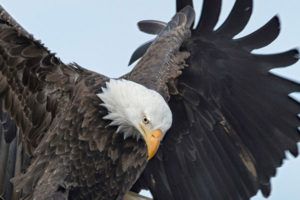The Hancock Bird: A Comprehensive Guide
The hancock bird world of birds is vast and diverse, with each species showcasing unique characteristics and behaviors. Among them, the stands out for its fascinating traits and ecological significance. In this article, we’ll explore the characteristics, habitat, behavior, conservation status, and its relationship with humans. So, grab a cup of coffee, sit back, and let’s dive into the intriguing world of the Hancock bird!
Introduction to the Hancock Bird

The Hancock bird, often referred to in scientific circles as Hancockius fantastica, is a captivating species native to the lush forests and wetlands of the tropical regions. With its striking plumage, distinctive calls, and unique behaviors, the captures the attention of both casual birdwatchers and seasoned ornithologists. This article aims to provide an in-depth look at the Hancock bird, discussing everything from its physical features to its role in the ecosystem.
Physical Characteristics
The Hancock bird is easily recognizable due to its vibrant coloration. Its feathers display a dazzling array of colors, including deep blues, bright greens, and vivid yellows. Adult males tend to be more colorful than females, showcasing a spectrum of hues that are not only visually stunning but also serve as a means of attracting mates during the breeding season.
Beyond its color, the Hancock bird has a distinct body shape that contributes to its agile movements. It boasts a sleek, elongated body, short legs, and a long tail that aids in balance while perched on branches. The beak is relatively long and slightly curved, perfect for foraging insects and fruits, which comprise a significant portion of its diet.
Moreover, the Hancock bird’s size varies, with adults typically measuring around 20 to 25 centimeters in length. This compact size allows for quick maneuvering through dense foliage, making it an adept climber and flyer. With its striking appearance and graceful movements, the is a true gem of the avian world.
Habitat and Distribution
The Hancock bird thrives in tropical rainforests, where it is often found in the canopy and understory layers. These habitats provide an abundance of food sources, including fruits, seeds, and insects, which are vital for the bird’s survival. The dense foliage of tropical forests offers excellent cover from predators, allowing the Hancock bird to forage and nest safely.
In terms of distribution, the Hancock bird is primarily found in Central and South America, with its range extending from southern Mexico to northern Argentina. It prefers areas with high humidity and ample rainfall, which contribute to the lushness of its habitat. Unfortunately, deforestation and habitat loss pose significant threats to the population, as large swathes of its natural environment are cleared for agriculture and urban development.
Efforts are underway to protect the Hancock bird’s habitat through conservation initiatives aimed at preserving the rich biodiversity of tropical ecosystems. By promoting sustainable land-use practices and protecting critical habitats, we can help ensure that future generations will continue to enjoy the beauty of the Hancock bird and its vibrant surroundings.
Behavior and Diet
Feeding Habits
The Hancock bird is primarily frugivorous, meaning that fruits make up a significant portion of its diet. It has a particular affinity for berries and small fruits found in its forest habitat. The bird uses its long, curved beak to expertly extract seeds and pulp from these fruits, playing a crucial role in seed dispersal for various plant species.
In addition to fruits, the Hancock bird is also known to consume insects, particularly during the breeding season when protein-rich food is essential for raising young chicks. This omnivorous diet helps the bird maintain a balanced nutritional intake, allowing it to thrive in its environment. The combination of fruits and insects makes the an important player in the ecosystem, as it contributes to both plant propagation and pest control.
Vocalizations and Communication
One of the most remarkable aspects of the Hancock bird is its vocalizations. It produces a variety of calls, ranging from melodious whistles to sharp chirps, which serve different purposes. These calls are essential for communication, especially during the breeding season when males compete for the attention of females.
The intricate vocal patterns of the Hancock bird are not only a means of attracting mates but also play a role in establishing territory. Males will often sing from prominent perches, broadcasting their presence to potential rivals and indicating their claim over a specific area. This vocal behavior is a fascinating example of how birds utilize sound to navigate their social environment.
In addition to their calls, Hancock birds are known for their visual displays. Males will engage in elaborate courtship rituals, showcasing their colorful plumage and performing acrobatic flights to impress females. This combination of auditory and visual communication highlights the complexity of the Hancock bird’s social interactions and emphasizes its role in the avian community.
Reproduction and Nesting
Breeding Behavior
The breeding season for the Hancock bird typically occurs during the rainy months when food resources are abundant. Males engage in competitive displays to attract females, often singing and performing aerial displays to demonstrate their fitness. Once a female selects a mate, the pair will engage in courtship feeding, where the male presents food to the female as part of the bonding process.
Nesting usually takes place in tree cavities or dense foliage, providing protection from predators. The female is responsible for building the nest, which is constructed using twigs, leaves, and other natural materials. The nest is often lined with soft plant fibers to create a comfortable environment for the eggs.
Egg Laying and Incubation
The female Hancock bird typically lays between two to four eggs per clutch, which are usually pale blue or greenish in color. The incubation period lasts about 14 to 18 days, during which the female remains attentive to the eggs, keeping them warm and safe from potential threats.
After hatching, both parents play an active role in caring for the chicks. They bring food to the nest and help keep the young birds warm. The chicks fledge around three weeks after hatching, though they may remain dependent on their parents for several weeks as they learn to forage on their own.
The nurturing behavior exhibited by the Hancock bird is a testament to the importance of parental investment in avian species. This strong family bond not only ensures the survival of the next generation but also strengthens social connections within the species.
Conservation Status
Threats to the Hancock Bird
Despite its remarkable adaptations, the Hancock bird faces significant threats to its survival. Habitat loss due to deforestation, agriculture, and urban development is the primary concern. As tropical forests continue to be cleared, the natural habitat shrinks, leading to decreased food availability and increased competition for resources.
Additionally, climate change poses a growing threat to the Hancock bird’s habitat. Changes in temperature and precipitation patterns can disrupt the delicate balance of ecosystems, affecting food sources and breeding success. As the climate continues to change, many bird species, including the Hancock bird, may find it increasingly challenging to adapt.
Conservation Efforts
Recognizing the importance of preserving the Hancock bird and its habitat, various conservation organizations and governments are working together to implement strategies aimed at protecting this species. Initiatives include establishing protected areas, promoting sustainable land-use practices, and raising awareness about the ecological significance of tropical forests.
Education plays a crucial role in conservation efforts. By informing local communities about the importance of biodiversity and the role of the in the ecosystem, conservation organizations can foster a sense of stewardship. Engaging communities in conservation projects not only helps protect the Hancock bird but also promotes sustainable livelihoods that can coexist with wildlife.
Moreover, research efforts are underway to better understand the Hancock bird’s behavior, population dynamics, and ecological role. This scientific knowledge is essential for developing effective conservation strategies that address the specific needs of the species and its habitat.
The Hancock Bird and Humans
Cultural Significance
The Hancock bird holds cultural significance in many of the regions where it is found. In some indigenous cultures, the bird is revered for its beauty and unique behaviors, often symbolizing freedom and resilience. Folklore and traditional stories featuring the reflect its importance in the cultural heritage of local communities.
Furthermore, birdwatching has become a popular recreational activity, with the Hancock bird often sought after by enthusiasts eager to observe its vibrant plumage and unique behaviors. This growing interest in birdwatching contributes to the local economy, as eco-tourism initiatives promote sustainable practices while providing income to communities that protect their natural resources.
Ethical Considerations
As interest in birdwatching and wildlife photography increases, ethical considerations come into play. It is essential for birdwatchers to approach their activities with respect for the environment and the species being observed. This includes minimizing disturbances to nesting sites, adhering to guidelines set by conservation organizations, and supporting responsible tourism practices.
Promoting ethical birdwatching not only helps protect the Hancock bird and its habitat but also fosters a deeper appreciation for nature. By emphasizing the importance of conservation and responsible observation, birdwatchers can contribute positively to the preservation of avian species.
Conclusion
In conclusion, the Hancock bird is a remarkable species that embodies the beauty and complexity of the avian world. With its vibrant colors, unique behaviors, and ecological significance, the Hancock bird captures the hearts of nature enthusiasts and conservationists alike. However, its survival is threatened by habitat loss and climate change, underscoring the urgent need for conservation efforts.
By raising awareness about the Hancock bird and its importance in the ecosystem, we can work together to ensure that future generations will continue to admire and appreciate this captivating species. As we navigate the challenges of conservation in a rapidly changing world, the serves as a reminder of the delicate balance between humanity and nature. Together, we can hancock bird create a sustainable future that honors the rich biodiversity of our planet, allowing the and countless other species to thrive.








Post Comment